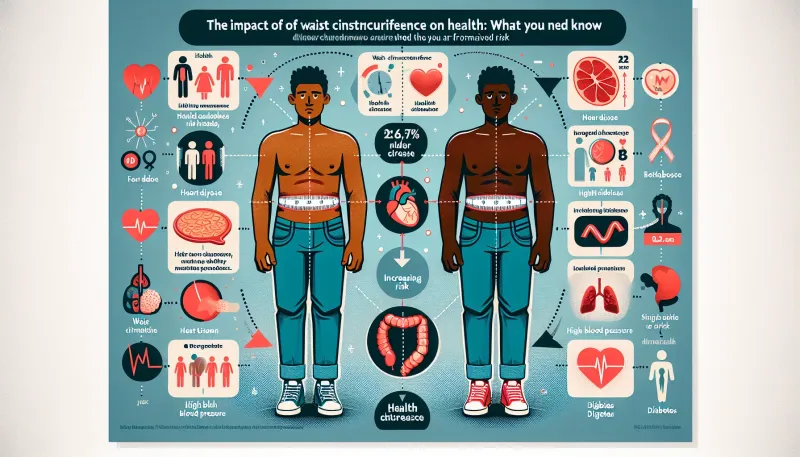The Impact of Waist Circumference on Health: What You Need to Know

Discover how waist circumference can impact health. This article delves into key insights, measurements, risks, and health management strategies associated with waist circumference.
Introduction
When considering overall health, most people think about weight, body mass index (BMI), or general fitness. However, waist circumference — the measurement around the smallest part of your waist — is a crucial indicator that often goes overlooked. Understanding the relationship between waist circumference and health, its implications, and the steps to manage it can significantly enhance health outcomes. This article provides a comprehensive overview of the impact of waist circumference on health.
What is Waist Circumference?
Waist circumference is a simple yet powerful metric that measures the distance around your torso at the level of your navel. Unlike BMI, which accounts for weight and height, waist circumference specifically monitors abdominal fat, offering insights that BMI alone may not provide. It is a valuable measure because abdominal fat, or visceral fat, is particularly harmful and linked to various health conditions.
How to Measure Waist Circumference
Step-by-Step Guide
Measuring your waist circumference at home is straightforward:
- Find Your Waist: Locate the smallest part of your waist, generally just above the hip bones and below the ribcage.
- Use a Tape Measure: Wrap a flexible, non-stretchable tape measure snugly around your waist at the identified spot.
- Ensure Precision: Ensure the tape is parallel to the floor and snug but does not compress the skin.
- Read the Measurement: Take the measurement after exhaling normally; note the number in inches or centimeters.
Interpreting the Results
Generally, a healthy waist circumference is:
- Less than 40 inches (102 cm) for men
- Less than 35 inches (88 cm) for women
Exceeding these measurements may increase the risk of obesity-related health issues, even if your BMI is within the normal range.
Health Implications of High Waist Circumference
Cardiovascular Disease and Waist Circumference
High waist circumference is a strong predictor of cardiovascular diseases. Abdominal fat contributes to conditions like hypertension, high cholesterol, and atherosclerosis, leading to an increased risk of heart attacks and strokes.
Type 2 Diabetes
Several studies have highlighted the link between a large waist circumference and the development of type 2 diabetes. Excess abdominal fat influences insulin resistance, thus promoting the onset of diabetes.
Metabolic Syndrome
A higher waist circumference is a key component of metabolic syndrome, which includes a combination of conditions such as high blood pressure, elevated blood sugar levels, and abnormal cholesterol or triglyceride levels, drastically increasing the risk for cardiovascular diseases and diabetes.
Other Health Risks
Beyond metabolic and cardiovascular concerns, a high waist circumference also relates to other health risks. These include sleep apnea, certain cancers, and even decreased life expectancy. Abdominal fat can affect organ function and trigger inflammatory responses, contributing to these issues.
Strategies to Reduce Waist Circumference
Dietary Changes
Adopting a balanced diet plays a critical role in managing waist circumference:
- Increase Fiber Intake: Foods high in fiber, such as vegetables, fruits, and whole grains, can help reduce visceral fat.



























